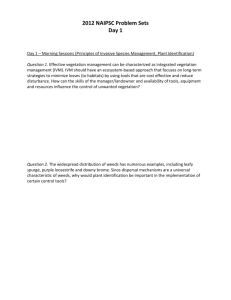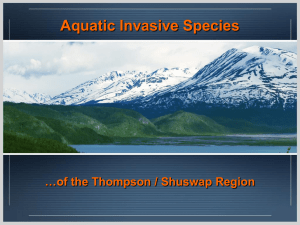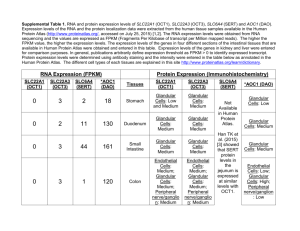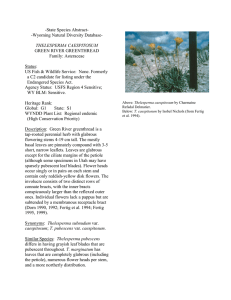Take Home 3
advertisement
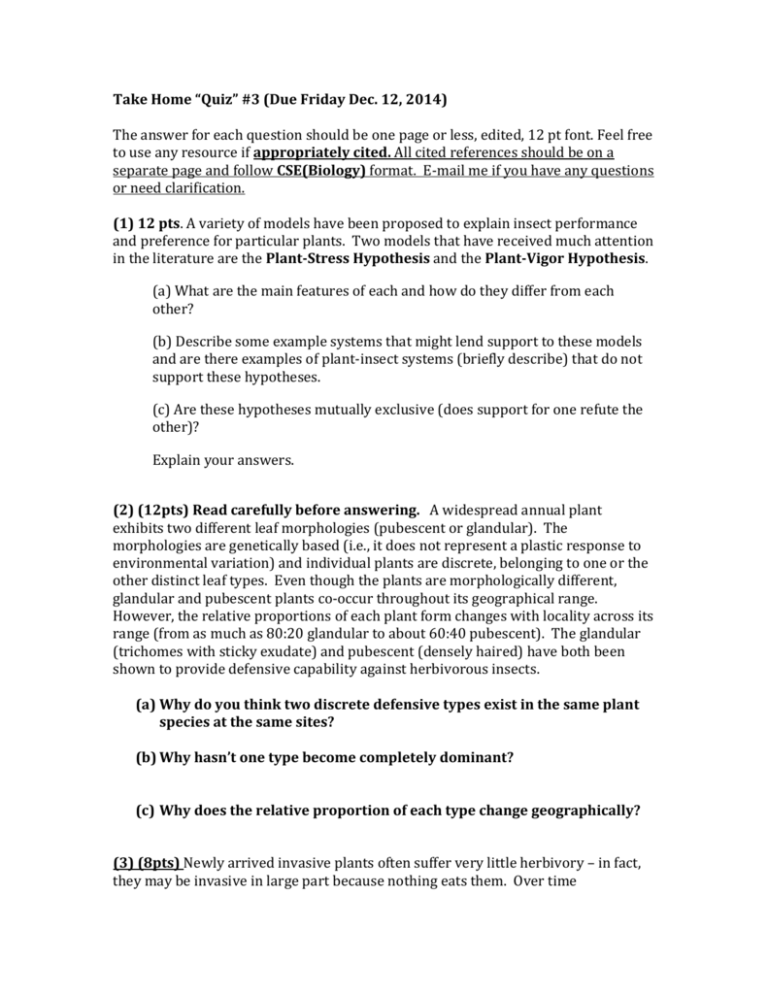
Take Home “Quiz” #3 (Due Friday Dec. 12, 2014) The answer for each question should be one page or less, edited, 12 pt font. Feel free to use any resource if appropriately cited. All cited references should be on a separate page and follow CSE(Biology) format. E-mail me if you have any questions or need clarification. (1) 12 pts. A variety of models have been proposed to explain insect performance and preference for particular plants. Two models that have received much attention in the literature are the Plant-Stress Hypothesis and the Plant-Vigor Hypothesis. (a) What are the main features of each and how do they differ from each other? (b) Describe some example systems that might lend support to these models and are there examples of plant-insect systems (briefly describe) that do not support these hypotheses. (c) Are these hypotheses mutually exclusive (does support for one refute the other)? Explain your answers. (2) (12pts) Read carefully before answering. A widespread annual plant exhibits two different leaf morphologies (pubescent or glandular). The morphologies are genetically based (i.e., it does not represent a plastic response to environmental variation) and individual plants are discrete, belonging to one or the other distinct leaf types. Even though the plants are morphologically different, glandular and pubescent plants co-occur throughout its geographical range. However, the relative proportions of each plant form changes with locality across its range (from as much as 80:20 glandular to about 60:40 pubescent). The glandular (trichomes with sticky exudate) and pubescent (densely haired) have both been shown to provide defensive capability against herbivorous insects. (a) Why do you think two discrete defensive types exist in the same plant species at the same sites? (b) Why hasn’t one type become completely dominant? (c) Why does the relative proportion of each type change geographically? (3) (8pts) Newly arrived invasive plants often suffer very little herbivory – in fact, they may be invasive in large part because nothing eats them. Over time (sometimes relatively short periods, sometimes over centuries), introduced plants start to acquire herbivores and tend to suffer more herbivory as time goes on. (a) Describe two factors (I can think of at least 4) that might profoundly influence the rate at which herbivores are acquired by an invasive plant and explain your answer. (b) The realized niche of introduced herbivorous insects is often much larger in their invasive range than in their historic native range. In fact, they may utilize host plants in their invasive range where growth and development are below the fitness threshold where they could be successful in their native range. What are two factors that could explain this important difference in realized niche between invaded and native ranges?





